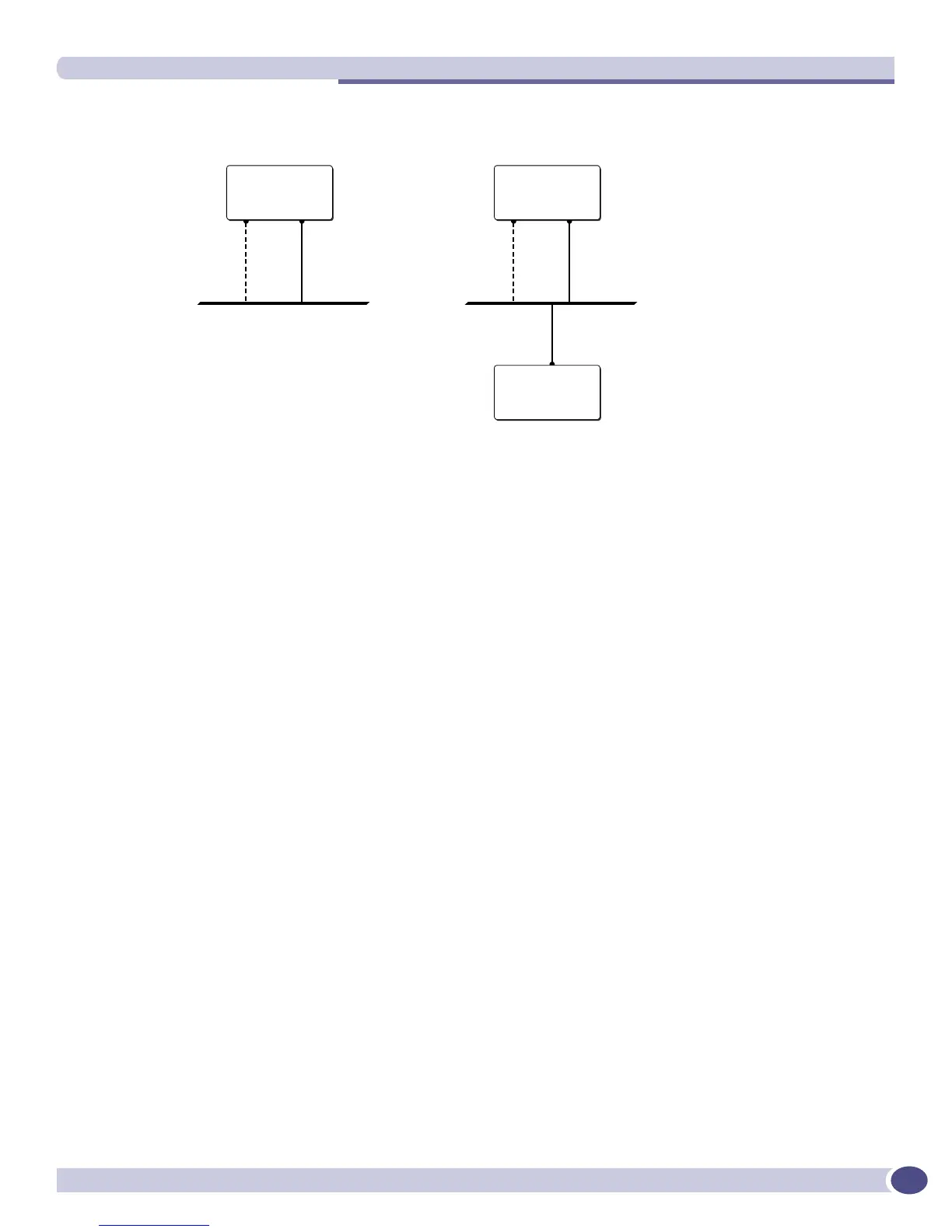Rapid Spanning Tree Protocol
ExtremeWare XOS 11.3 Concepts Guide
441
Figure 38: Example of root port rapid behavior
If the backup port receives the BPDU first, STP processes this packet and temporarily elects this port as
the new root port while the designated port’s role remains unchanged. If the new root port is
immediately put into the forwarding state, there is a loop between these two ports.
To prevent this type of loop from occurring, the recent backup timer starts. The root port transition rule
does not allow a new root port to be in the forwarding state until the recent backup timer expires.
Another situation may arise if you have more than one bridge and you lower the port cost for the
alternate port, which makes it the new root port. The previous root port is now an alternate port.
Depending on your STP implementation, STP may set the new root port to the forwarding state before
setting the alternate port to the blocking state. This may cause a loop.
To prevent this type of loop from occurring, the recent root timer starts when the port leaves the root
port role. The timer stops if the port enters the blocking state. RSTP requires that the recent root timer
stop on the previous root port before the new root port can enter the forwarding state.
Designated Port Rapid Behavior
When a port becomes a new designated port, or the STP priority changes on an existing designated
port, the port becomes an unsynced designated port. In order for an unsynced designated port to rapidly
move into the forwarding state, the port must propose a confirmation of its role on the attached LAN
segment (unless the port is an edge port). Upon receiving an “agree” message, the port immediately
enters the forwarding state.
If the receiving bridge does not agree and it has a superior STP priority, the receiving bridge replies
with its own BPDU. Otherwise, the receiving bridge keeps silent, and the proposing port enters the
forwarding state and starts the forward delay timer.
The link between the new designated port and the LAN segment must be a point-to-point link. If there
is a multi-access link, the “propose” message is sent to multiple recipients. If only one of the recipients
agrees with the proposal, the port can erroneously enter the forwarding state after receiving a single
“agree” message.
Backup
port
Designated
port
LAN segment
Inital topology
EX_054
Bridge
Backup
port
Designated
port
Superior STP
bridge priority
New topology
Bridge
Root
bridge

